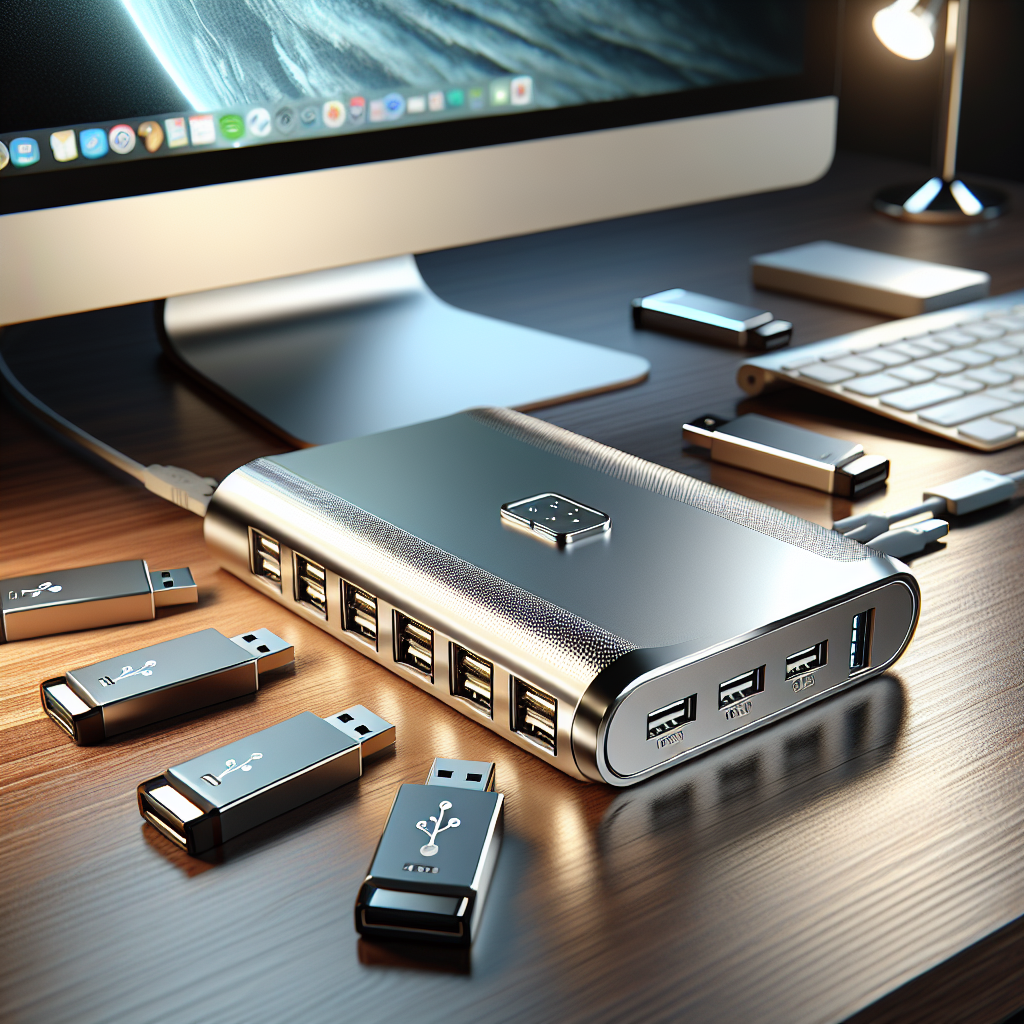In today’s fast-paced digital world, the need for connecting multiple devices to a computer or laptop has become increasingly vital. Whether you are transferring files, backing up data, or simply need more USB ports, having the right USB splitter can make a significant difference. In this article, we explore what makes a USB splitter the best choice for connecting multiple flash drives, focusing on key features, types, and recommendations.
| Feature | Description |
|---|---|
| Number of Ports | Determines how many devices can be connected simultaneously. |
| Data Transfer Speed | The rate at which data is transferred, usually measured in Mbps or Gbps. |
| Power Supply | Indicates if the splitter needs an external power source. |
| USB Standard | Refers to the version of USB (2.0, 3.0, 3.1, etc.) supported by the splitter. |
| Compatibility | Check if the splitter is compatible with your operating system and devices. |
| Build Quality | Durability and design of the splitter. |
Understanding USB Splitters
A USB splitter, also known as a USB hub, expands the number of USB ports available on your computer or laptop, allowing for multiple devices to be connected at once. In the context of flash drives, a quality USB splitter can significantly enhance productivity by allowing users to transfer files between various drives simultaneously.
Types of USB Splitters
When choosing a USB splitter, it’s important to consider the different types available on the market. Here are some common options:
- Passive USB Splitters: These splitters don’t have any power sources and typically come with limited functionality. They are best for low-powered devices.
- Active USB Splitters: Active splitters are powered and can support more demanding devices, ensuring that all connected devices receive adequate power.
- USB 2.0 Splitters: Designed for backward compatibility with older devices, these are suitable for basic data transfer needs.
- USB 3.0 Splitters: These offer faster data transfer speeds and are ideal for high-performance devices such as external hard drives and flash drives.
- Multi-Port Hubs: These hubs usually combine a mix of USB Type-A and Type-C ports, providing versatility for various devices.
Key Features to Look for in a USB Splitter
When shopping for a USB splitter, consider the following features to make an informed decision:
- Number of Ports: Ensure the splitter offers enough ports for your needs. A typical hub may have 4 to 10 ports.
- Data Transfer Speed: Look for splitters that support USB 3.0 or higher for fast data transfer, ideally 5 Gbps or more.
- Power Supply: Active splitters with a power adapter can support more devices and ensure stable performance, particularly with high-capacity flash drives.
- Build Quality: A well-constructed splitter can withstand wear and tear, ensuring longevity.
- Compatibility: Make sure the splitter is compatible with different operating systems like Windows, Mac, and Linux.
Top Recommendations for USB Splitters
Here’s a roundup of some of the best USB splitters available in the market for connecting multiple flash drives:
1. Anker 10-Port USB 3.0 Hub
The Anker 10-Port Hub is ultra-reliable and boasts a total of 10 USB 3.0 ports with data transfer speeds of up to 5 Gbps. With its sleek design and built-in power adapter, it ensures your devices are powered and ready to go.
Specifications:
- Ports: 10 USB 3.0
- Data Transfer Speed: Up to 5 Gbps
- Power Supply: Yes
2. Sabrent 4-Port USB 3.0 Hub
Compact and portable, the Sabrent hub includes four USB 3.0 ports, perfect for on-the-go needs. It offers high-speed data transfer and plug-and-play functionality.
Specifications:
- Ports: 4 USB 3.0
- Data Transfer Speed: Up to 5 Gbps
- Power Supply: No
3. powered USB Hub by Inateck
A versatile option, this powered USB hub from Inateck offers 7 USB 3.0 ports and comes with a power adapter for support with high-energy devices.
Specifications:
- Ports: 7 USB 3.0
- Data Transfer Speed: Up to 5 Gbps
- Power Supply: Yes
4. UGREEN USB 3.0 Hub with 4 Ports
This USB hub by UGREEN is widely appreciated for its compact design. It supports SuperSpeed data transfer and is perfect for flash drives and other USB peripherals.
Specifications:
- Ports: 4 USB 3.0
- Data Transfer Speed: Up to 5 Gbps
- Power Supply: No
5. HooToo USB C Hub
If you are looking for a USB splitter that supports USB-C devices, the HooToo USB C Hub provides functionality for both USB-C and USB-A connections.
Specifications:
- Ports: 3 USB-A and 1 USB-C
- Data Transfer Speed: Up to 5 Gbps
- Power Supply: No
How to Choose the Right USB Splitter?
To select the best USB splitter for connecting multiple flash drives, consider the following:
- Assess Your Needs: Determine how many devices you need to connect and the types of devices (flash drives, external HDDs, etc.).
- Speed Requirements: Prioritize hubs that offer the best data transfer speeds to ensure efficient operations.
- Usage Context: Evaluate if the hub will primarily be used at home, in the office, or while traveling, as portability may be a consideration.
- Budget: Set a budget range that allows you to pick reliable brands without overspending.
Common Issues with USB Splitters
While USB splitters enhance connectivity, users might encounter some challenges:
- Limited power supply on passive splitters leading to device disconnections.
- Potential slow transfer speeds if too many high-demand devices are connected.
- Compatibility issues with older devices or operating systems.
- Physical wear and tear over time, especially in cheap models.
Conclusion
Selecting the best USB splitter for connecting multiple flash drives is essential for enhancing your device connectivity. With various splitter options on the market that have different features and specifications, carefully consider your connectivity needs to make an optimal choice. Whether you require an active hub for performance-oriented tasks or a simple splitter for occasional use, there are suitable options available to meet your demands.

